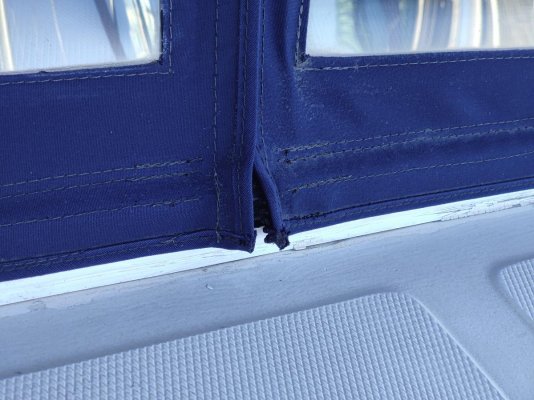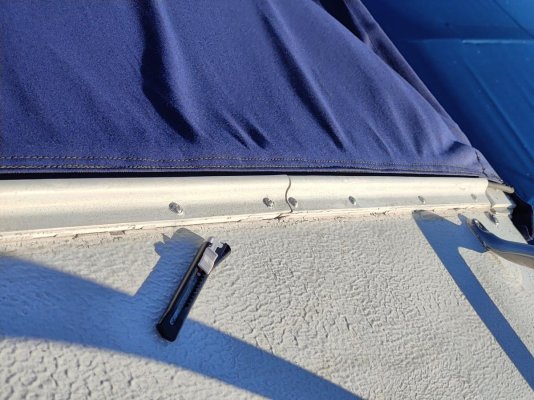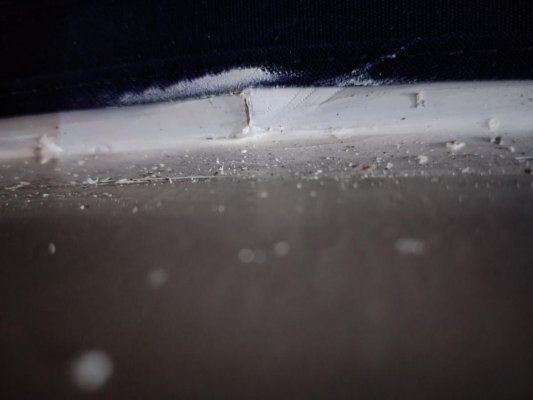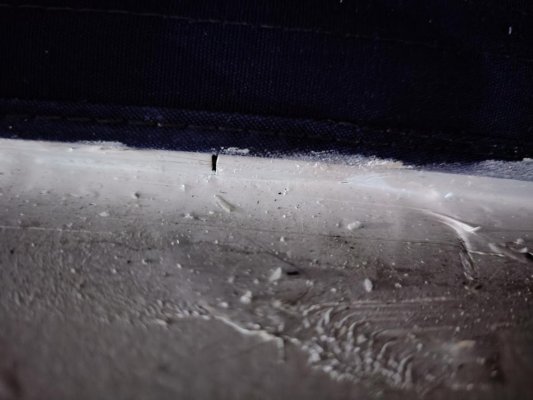paulga
Guru
- Joined
- May 28, 2018
- Messages
- 977
- Location
- United States
- Vessel Name
- DD
- Vessel Make
- Marine Trader Sundeck 40'
The rain started earlier and going overnight. I just noticed water leaks inside through zippers and canvas where the windows connect to the aft hardtop (sundeck roof). See the picture I attached. I attempted to patch a vinyl tape but failed to seal it. Water still comes in continually.
What caulk can I apply along the perimeter inside or outside to block the water?
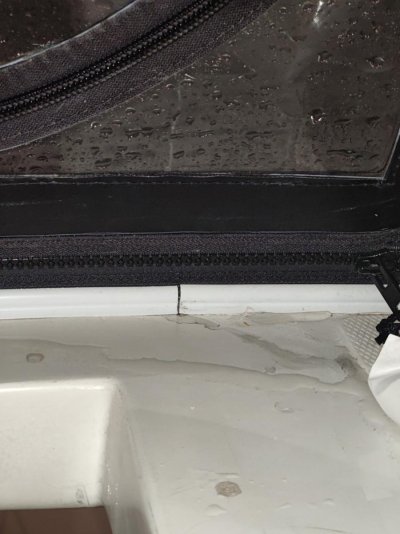
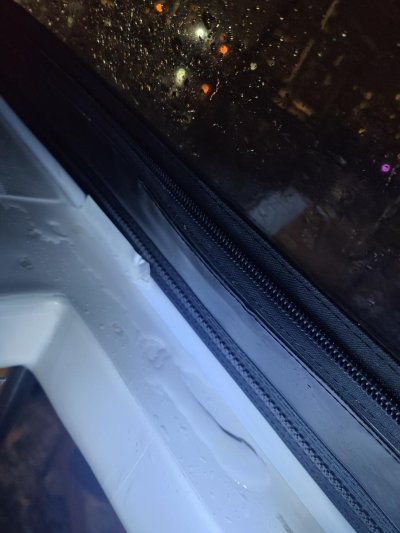
What caulk can I apply along the perimeter inside or outside to block the water?


Last edited:

